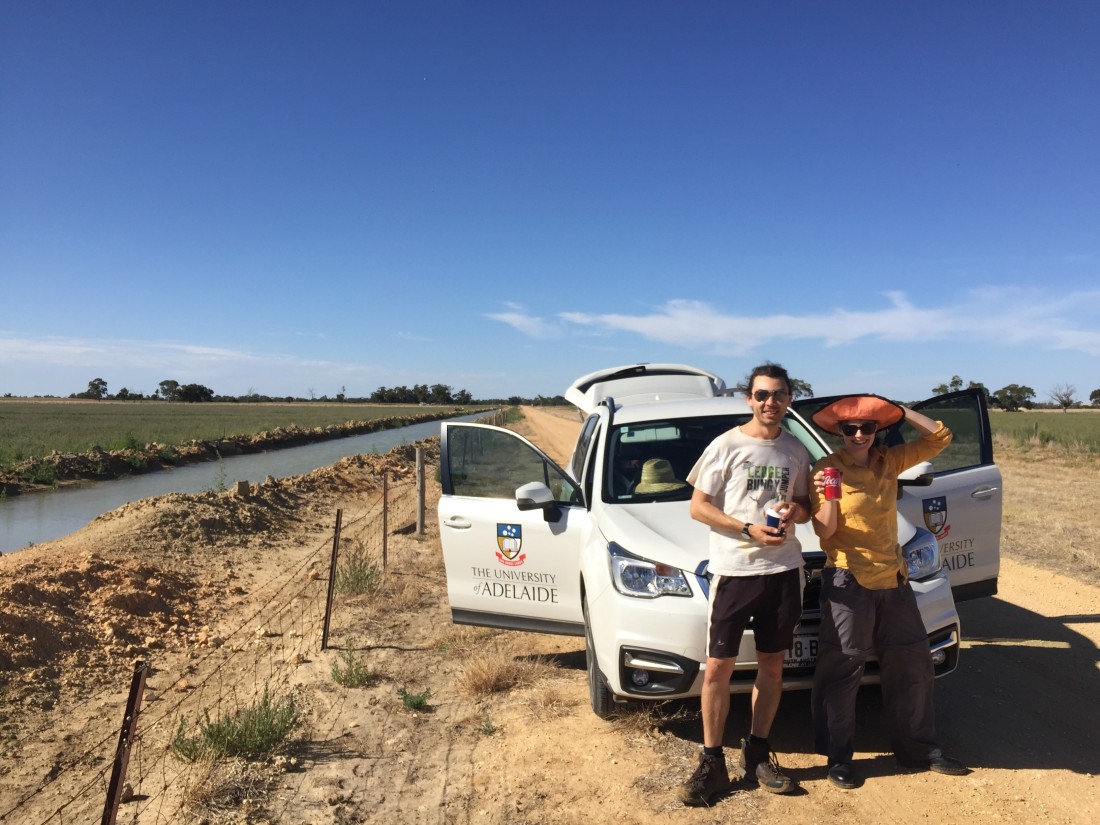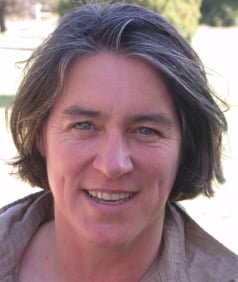Dr Scott Groom has been particularly busy observing the bees foraging on flowering lucerne, specifically looking at the quality of lucerne pollination in relation to old Eucalyptus trees in the landscape.
So why look at the effects of these old trees? Well, worldwide, there is a correlation between proximity of woody vegetation, bee densities and the yield of pollination dependent crops. In Australia, feral honey bees, which nest in hollows in old Eucalyptus trees, provide a substantial share of the free pollination.
But how large are these benefits and over what distance do they play out?
To estimate that, Scott and his team have quantified the densities of bees and the set in lucerne, relative to the presence of old eucalypt trees.
Specifically, the team quantified bee visitation and set:
- At different distances from field edges that contained large eucalypt trees, housing one or more feral honey bee hives;
- In fields with scattered old ’paddock trees’ throughout (see picture);
- At different distances from field edges without eucalypts, but containing a large drop of managed honey bee hives;
Scott will need another two years of data collection to get the full picture, but he’ll share some of his very interesting preliminary findings.
Proximity of large eucalypt trees benefit set in lucerne
The team discovered that there were twice as many honey bees foraging on lucerne in close proximity of field margins with native vegetation that included old eucalypts, than at field edges that lacked native vegetation.

Jay Iwasaki and Lizzy (aka Spud) Williamson, who assisted with the fieldwork
 Author
Author
Dr Katja Hogendoorn is a Research Associate in the School of Agriculture, Food and Wine, University of Adelaide here at the Waite campus.
This article was originally published on her Wild pollinators of lucerne blog.

Scattered large paddock trees often house feral honey bee hives. Such fields have a more even set than fields without trees.
More importantly, they found that this higher density of bees was reflected in pod set: Going into the paddock, set was 30% higher at 75 m than at 300 m from the margin that contained native vegetation (data averaged across three replicate transects).
Scattered paddock trees also had an effect on pod set, which was more evenly distributed over the block, than in fields that had eucalypts only along the edge.
Although Scott’s results remain preliminary, there are already two important implications:
- Firstly, if the closest old eucalypt trees are more than 250 m away from the paddock, your yield will probably benefit substantially if you order in hives from a beekeeper. This would likely be the case in most pivot and flood irrigated lucerne.
- Secondly, planting trees for bees, maintaining paddock trees and caring for the vegetation in the field margins will ultimately support pollinator populations, and help to enhance and secure their free pollination services.
Scott and Katja would like to thank Jay and Lizzy for their fabulous field assistance.
 This project is supported by AgriFutures Australia, through funding from the Australian Government Department of Agriculture and Water Resources as part of its Rural R&D for Profit Program, as well as Horticulture Innovation Australia.
This project is supported by AgriFutures Australia, through funding from the Australian Government Department of Agriculture and Water Resources as part of its Rural R&D for Profit Program, as well as Horticulture Innovation Australia.
